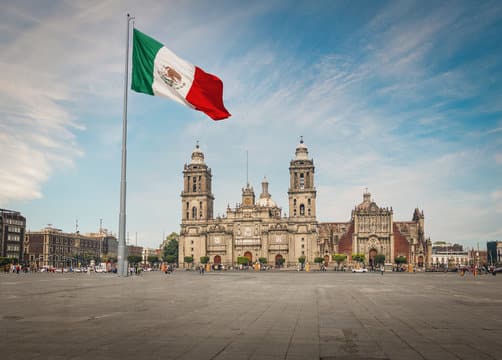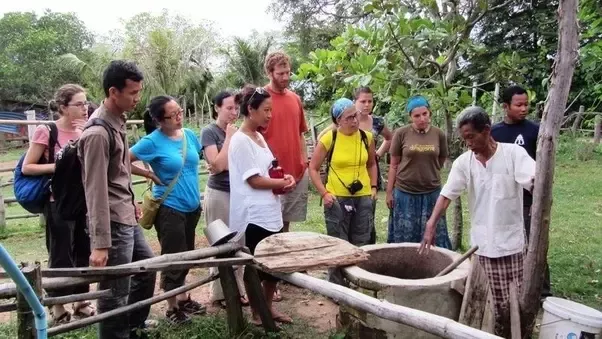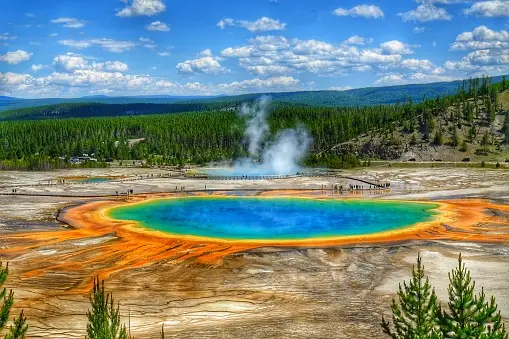
Yellowstone National Park is a world-famous national park located primarily in the state of Wyoming region, U.S. This park spread into 3 regions; Wyoming (Covered 96% of the land area), extending to Montana (Covered 3% of the land area) and Idaho ( Covered 1% of the land area). So, Wyoming contributions to the Yellowstone’s National Park area’s coverage is more. It was established on March 1, 1872, and is considered the first national park in the United States and widely considered the first national park in the world.
Park has a nearly 8,991 sq. km area with Wildlife and volcanic hot spots. Park is the best example to spot Canyons, alpine rivers, lush forests, hot springs and geysers including top destinations like Old Faithful. Here you will see a more diverse range of flora and fauna.
Related Search: Badlands National Park.
Some of the Key Details about Yellowstone National Park
1. Size and Location

Yellowstone National Park is spread over an area of approximately 2.2 million acres (or 8,991 square kilometer’s). Such a vast natural forest sits on top of a volcanic hotspot, park is the best example of unique geothermal features and geological formations. Majority of Park lies within Wyoming (96% of total land), Montana ( 3% of total land) and Idaho (1% of total land). Nearest town to Yellowstone National Park are Montana and Gardiner, which both are just 0.7 miles from Yellowstone North Entrance.
2. Wildlife
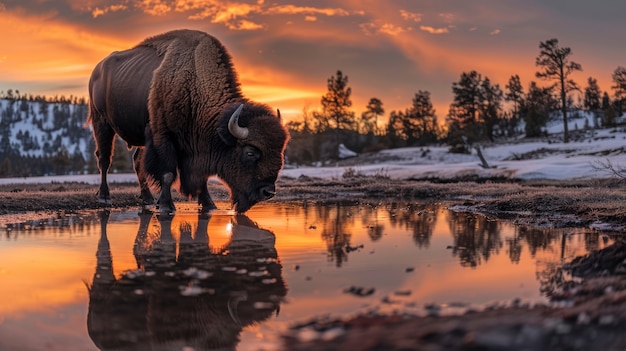
Definitely, you will never be disappointed to see a Diverse range of wildlife in Yellowstone National Park including a wide range of flora and fauna. Here visitors are so fortunate to explore some of the rarest animals such as grizzly bears, wolves, bison, elk, moose and 60 other types of mammals. Also, backpackers can watch more than 200 species of animals, 300 species of birds, and 16 species of fish.
In the United States, this is the only place where these animals (especially American Bison) can be seen in their natural habitat. American bison are famous and the largest remaining animal in this park.
3. Geothermal Features

Another special feature of this park is its Geothermal activity. Yellowstone National Park has more than 10,000 Thermal features including its world-renowned geysers. Such as Grand Prismatic Spring, Mammoth Hot Springs, the Norris Geyser Basin, Mud pots, Steam vents and many more.
The most famous is Old Faithful, which periodically blows up at regular intervals. The Great fountain geyser, Grand prismatic spring, green dragon spring, and grotto fountain geyser are famous geysers in Yellowstone National Park.
4. Yellowstone Caldera

Below Yellowstone National Park lies a massive caldera (active volcanic feature). Active caldera is responsible for geothermal activity in particular areas. Especially, Northwestern Wyoming which is considered as the one of the largest volcanoes in the world.
This national park helps scientists and researchers in studying geology and potential volcanic activity. The first eruption occurred around 2,100,000 years ago in this park. Its effect of ash and short-period changes affect entire global climates.
5. Outdoor Activities

Despite of its Wildlife and Caldera, Yellowstone National Park provides a vast range of recreational activities for tourists. Starting from the stress-busting outdoor activities to family friendly vacation ideas Yellowstone National Park is for you.
Those activities includes, Yellowstone vacation tours, Grizzly and Wolf discovery center, Fishing, Photography, Whitewater rafting, Zipline, Horseback riding, Camping, Hiking, Biking/ Cycling, boating, and Wildlife views. Park has an example in the U.S. from numerous series ranging from easy walks to adventurous multi-day hikes.
6. Historic Sites

Yellowstone, having 11,000 years of long history, also has world-famous places with historic importance that showcase the rich cultural heritage of this Park. Out of that Old Faithful Inn is popular one, which was built in 1903 and is considered one of the finest historic hotels in America.
Obsidian Cliff, Fort Yellowstone, Lake Hotel, Trailside Museum, Fishing Bridge, and Madison are the iconic historical sites in Yellowstone. Yellowstone park labelled to archaeological sites, that provide information into the lives of the indigenous people who inhabited the area for thousands of years.
7. Scenic Beauty
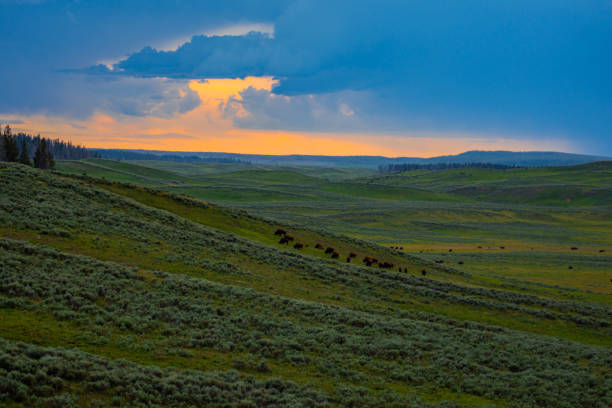
Yellowstone Park has eye-catching natural beauty, and hiking trails, including majestic canyons, stunning waterfalls, views, old faithful, pristine lakes, and lush forests. South Entrance is considered one of the most beautiful entrances in Yellowstone.
Yellowstone River, the Grand Canyon of Yellowstone, and Yellowstone Lake offer stunning views for visitors and photographers too. Never forget to watch ts geyser-shooting water rises above 100 feet into the air.
What are the Health Benefits from Traveling’s?
Places to Explore Within Yellowstone National Park
1. Old Faithful
Old Faithful is an iconic geyser that has been delighting visitors for decades. Every 91 minutes geyser will erupt here. Shooting from 3,700 to 8,400 of boiling water fly and reach above the height of 145 feet. That’s why the name old faithful comes from its predictable and frequent eruptions.
2. Grand Prismatic Spring

Grand Prismatic Spring is the 3rd largest spring in the world located located in the Midway Geyser Basin. It is roughly 300 feet of water with a heated 160 degrees Fahrenheit. This stunning hot spring is known for its vibrant and colorful display of water. Most scenic and attractive landmark in entire park offers tremendous views from the top of the park.
3. Yellowstone Lake
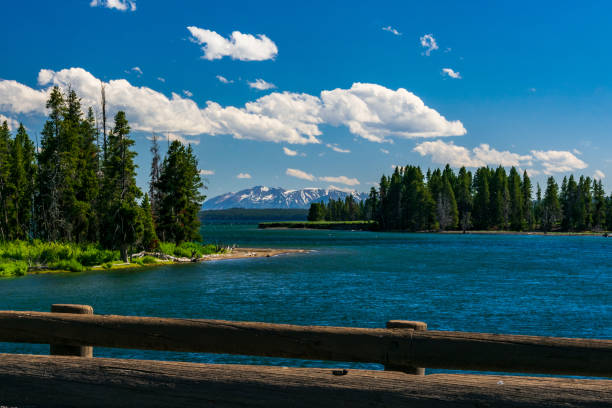
Yellowstone Lake is quite famous because its surface is covered by 5% water only. Moreover, this park contains an array of hot springs and geysers including large areas of cold water. It is one of the largest in North America under high-elevation lakes. Yellowstone Lake is a beautiful place to explore and offers mind blowing opportunity to enjoy a place with its crazy outdoor activities such as boating, fishing, and lakeside picnicking.
4. Grand Canyon of the Yellowstone

The Grand Canyon of Yellowstone expresses the park’s complex geological history and breathtaking colors and shapes. Marvel at the towering waterfalls and eye-catching scenes of the canyon walls are taken into consideration with the inclusions of two main waterfalls, Upper and Lower Falls.
5. Lamar Valley

Due to a large number of herds of elk and bison bighorn sheep, mountain goats, wolves, grizzly bears, and antelope park is home of many endangered species in the world. That’s why this valley is also named “Serengeti of North America,”. Lamar Valley is popularly known for its abundant wildlife and sole location for wildlife spotting.
6. Mammoth Hot Springs

Terraces Mountain at Mammoth Hot Springs is the largest carbonate-depositing spring in the world. Under Mammoth Hot Springs, Minerva terrace (tuff terraces) has more features at springs. It is a unique geological feature shaped by thousands of years of mineral-rich water flow. The terraces rearrange cascading terraces of a natural hot spring.
Journey to Summit: Facts of Mount Everest.
7. Norris Geyser Basin
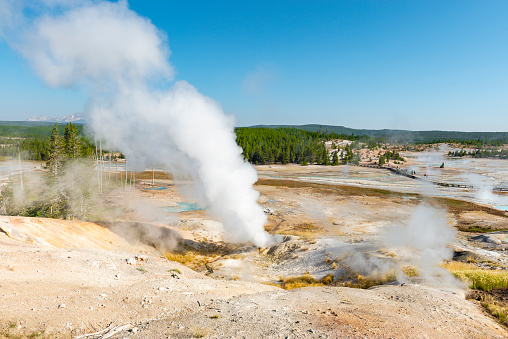
Under Yellowstone national park, Norris Geyser Basin is one of the hottest and most acidic hydrothermal areas with variety of geothermal features, including geysers, springs, and mud pots. Located in the center of the park and west side of the Grand Loop, known for its often changing and fascinating sight to explore for a visitor.
8. Hayden Valley
It is located in the Heart of the Yellowstone national park. When you compare it with other valleys, Hayden Valley has large areas of grassland along with abundant of wildlife’s. Hayden Valley offers a good number of animals, including bison, elk, and even the occasional bear or wolf, making it well known destination for photographers too.
9. Artist Point

This name was originally formed in 1883 by Frank Jay Haynes. Artist point place at which painter Thomas Moran painted his 1872 drawing of these falls. Mind Blowing views of the Grand Canyon Yellowstone of its views of the canyon, the Yellowstone River, and the impressive Lower Falls. Artist Point has 109 ft. upper falls and 308 ft. lower falls.
10. Tower Fall

Situated near the northeastern entrance of the park, Tower Fall is a picturesque 132-foot waterfall that drops into a deep canyon. It’s a great spot primarily recommended for photography of its short hikes in the area.
Yellowstone National Park Map

Last But Not Least
It’s important to inform you that Yellowstone National Park is subject to seasonal shutdowns and levied certain regulations to preserve and protect its natural ecosystem and protect wildlife and natural habitat.
National Park has a platform called “National Park Service” which help travelers to check up-to-date information regarding the park’s accessibility, timings, fee structures, specific guidelines and permission for intended outdoor travel activities. National Park Service is not just for Yellowstone, even for many national parks in United States. Yellowstone National Park is always open 24/7 to general public after 2022 flood.
Related Articles: Zion National Park.
Q : Where is Yellowstone National Park?
A : Yellowstone National Park is a world-famous national park located primarily in the U.S. American, state of Wyoming region. This park spread into 3 regions; Wyoming (Covered 96% of the land area) and even more, extending to Montana (Covered 3% of the land area) and Idaho ( Covered 1% of the land area).
Q : How big is Yellowstone National Park?
A : Yellowstone National Park is spread over an area of approximately 2.2 million acres (or 8,991 square kilometer’s).
Q : What state is Yellowstone National Park in?
A : This park spread into 3 regions; Wyoming (Covered 96% of the land area) and even more, extending to Montana (Covered 3% of the land area) and Idaho ( Covered 1% of the land area). So, Wyoming state holds the majority of Yellowstone National Park areas.
Q : Is Yellowstone National Park is open?
A : Recently the National Park introduced a ‘Service Website’ for travelers to check up-to-date information regarding the park’s accessibility, timings, fee structures, specific guidelines and permission for intended outdoor travel activities. Yellowstone National Park is open 24/7 fully opened after 2022 flood.
Q : What city is Yellowstone National Park in?
A : Nearest town to Yellowstone National Park are Montana and Gardiner. Both are just 0.7 miles from Yellowstone North Entrance.
Q : How many acres is Yellowstone National Park?
A : Yellowstone National Park is spread over an area of approximately 2.2 million acres (or 8,991 square kilometer’s).
Q : Where is Yellowstone National Park on a map?
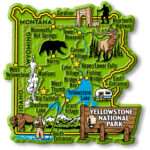
A : With the help of this map you can easily navigate internal route of the Yellowstone National Park.

